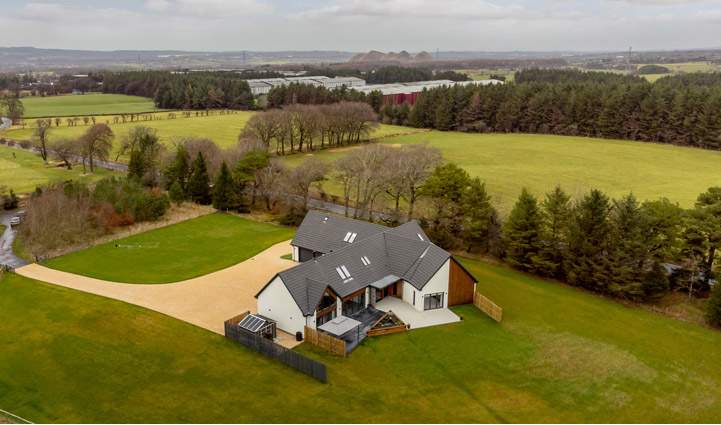Demand continues to outweigh supply
Scotland’s prime residential market might feel slightly less feverish than a year ago, however, the ‘race for space’ has yet to fully run its course. As we approach the summer market, the number of new buyers who registered with Savills to buy a property here during the first four months of 2022 was 95.7% higher than the same period in 2019 before the pandemic, signifying continued strong demand for prime Scottish homes.
This demand has translated into prime transactional activity significantly higher than pre-pandemic levels and marginally lower than in the same period of 2021, which in itself was a record-breaking year for transactions above £500,000. The first four months of 2022 saw 91.8% more agreed sales between £500,000 and £1 million than the same period between 2017 and 2019, according to data provider TwentyCi. Above £1 million, there were 124.3% more sales.
There is beginning to be more new supply to support these sales. Yet such has been the speed at which new listings have been snapped up that there were 15.4% fewer prime Scottish properties available to buy at the end of April in the market above £500,000. In fact, larger homes spent 33.6% less time on the market in April compared to last year according to Home.co.uk, making it an opportune time for would-be vendors to list their homes.
Constrained availability supports price growth
Against a backdrop of constrained availability, prime Scottish house prices rose by 2.2% in the three months to March 2022. This puts them 8.9% higher than a year ago, according to the Savills prime index.
Since the beginning of the pandemic, prime Scottish prices have risen by 15.0%, reflecting a market that has been driven by the trend for more space. But despite eight successive quarters of price growth since the pandemic, prime prices still remain 3.5% below the peak of 2007/08 before the global financial crash. There are wide variations, however, with prime prices in the city areas of Edinburgh and Glasgow 16.3% higher and those in Scotland’s village and rural areas 14.0% lower than the peak of 2007/08.
Meanwhile, prices in the rarefied £2 million-plus Scottish country house market are 29.5% lower than their 2007/08 peak. So despite recent price growth, Scotland continues to offer value for money, presenting an opportunity for new buyers.

Village and rural areas outperform
With hybrid working patterns now embedded, a dream move to the country for many buyers is still at the forefront of their minds, fuelling a 2.5% quarterly price growth in Scotland’s prime village and rural areas.
This was led by East Lothian and Scotland’s heartland of Fife, Stirlingshire and Perthshire. Here, lofty premiums are being paid for holiday homes, with a keen interest in contemporary and energy-efficient homes. Meanwhile, prime price growth in Angus and Dundee was led by Montrose, Forfar and Broughty Ferry.
House prices across the Aberdeen area have remained stable so far this year. An uptick in demand for prime properties, mainly up to £1 million, since the beginning of the pandemic absorbed much of the excess stock that has suppressed price growth here for the last seven years. However, it remains a price-sensitive market at the very top-end above £1.5 million.
Despite the ongoing trend for country living, for some buyers, proximity to work and the wider range of amenities and services offered in city and town locations is becoming a more pressing consideration. As such, prime values in Scottish urban areas increased by 1.7% in the three months to March 2022. Quarterly price growth of 1.9% and 1.6% in the city areas of Edinburgh and Glasgow respectively was led by a pick-up in demand for flats, with the family house market remaining highly competitive.
There continues to be unmet demand from those searching for more space across Scotland’s prime market. While the supply-demand imbalance remains a feature of the market, the lack of suitable stock is expected to support further price growth.
Equity outweighs debt as a source of funding in the prime market and much higher levels of disposable income mean buyers have been more insulated against economic pressures, such as the higher costs of debt, rising inflation and the geopolitical uncertainty triggered by the disturbing events in Ukraine. However, the rate of price growth is expected to slow as the year progresses given the economic backdrop.
Looking further ahead, buyers are beginning to rethink their priorities in the face of soaring energy prices. Indeed, according to our April 2022 survey of buyers and sellers, a third said that they placed more importance on EPC ratings than they did a year ago. Furthermore, almost three in five respondents said that they would be happy to pay more for a property if at least 75% of the property’s energy was powered by renewable sources.
